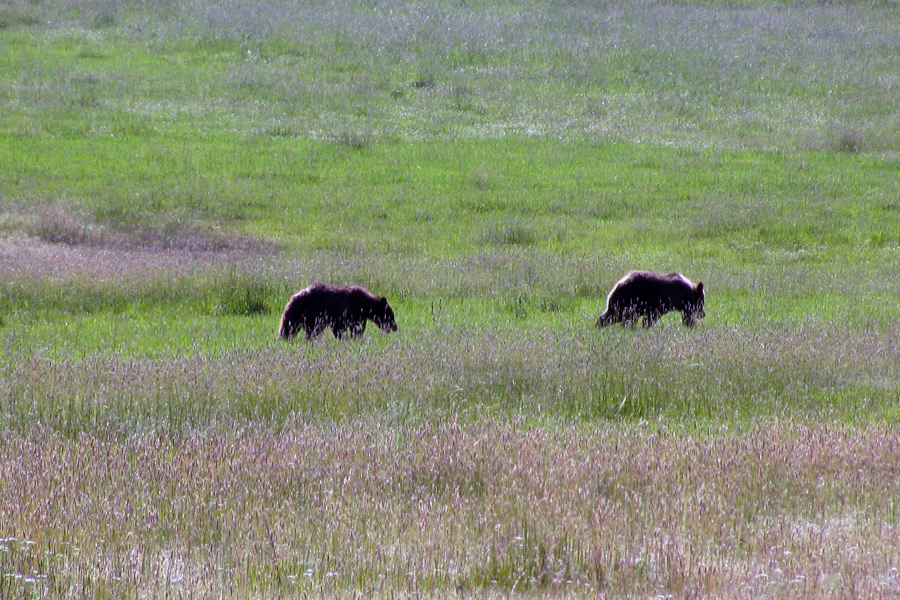An adult female grizzly bear was killed Aug. 23 after being hit by a vehicle on U.S. Highway 2 between Marias Pass and East Glacier, bringing the toll of grizzlies killed in highway collisions to 10 in the region.
So far this year, 30 grizzly bears have been removed from the Northern Continental Divide Ecosystem’s population, 14 of which are classified as removals due to “vehicle collisions.” Ten of those bears were killed in collisions, while four are orphaned cubs that have been rehomed or euthanized.
In a separate incident, an adult male grizzly bear was recently found dead in Crow Creek near Ronan on the Flathead Indian Reservation. The cause of death is unknown, but there were no initial indications that the bear was illegally killed.
The fatality on Highway 2 occurred during the evening hours of Aug. 23. The bear was wearing a GPS radio collar that was originally attached through a trend monitoring research project, according to officials from Montana Fish, Wildlife and Parks. The female was 17 years old and was accompanied by a yearling bear.
Yearlings have a higher survival rate than cubs when separated from their mothers, and no attempts were made to capture the yearling, officials said.
Drivers should be especially vigilant at night or early in the morning of wildlife crossing roadways, particularly on wildlife-rich corridors like U.S. Highway 2 and U.S. Highway 93.
This year’s total of grizzly bear mortalities due to vehicle collisions is the most on record for the Northern Continental Divide Ecosystem (NCDE), a sprawling region situated in Northwest Montana, which includes Glacier National Park, portions of the Flathead and Blackfeet Indian reservations, parts of five national forests, Bureau of Land Management lands, as well as state and private lands.
The NCDE is currently home to more than 1,000 grizzly bears.
In the past decade, grizzly mortalities due to vehicle collisions have averaged 2.7 bears annually, while the NCDE’s bear population is estimated to be growing at a rate of 2.3 percent annually.
With the NCDE’s grizzly population slated to be delisted from the Endangered Species Act by the end of the year and returned to management by the state, a conservation strategy is in place to prevent the bear population from slipping below a certain threshold, which the Interagency Grizzly Bear Committee has set at 800 bears.
To stay above that threshold, the strategy allows for an average of 25 grizzly mortalities or removals per year in the NCDE, a figure that is dependent on several factors, including snowpack, the health of berry crops, and other issues that can increase the chance of a conflict with a human.
This year’s mortality figures have already passed the threshold, and bears will continue to grow more active as they prepare for winter denning.
FWP officials said bears are actively seeking food sources before the winter denning season, and urged residents to reduce or secure food attractants, garbage, and pet and livestock food. Wildlife managers have seen an uptick in reports of bears approaching food sources, such as fruit trees and garbage.
